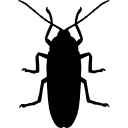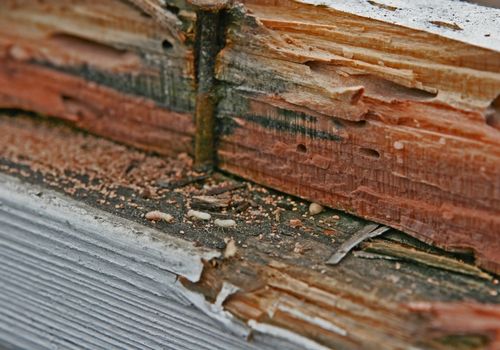Pest Control In Milton
FAST & EFFICIENT PEST REMOVAL
10,000+ SATISFIED CUSTOMERS
LICENSED & PROTECTED
ECO FRIENDLY PEST CONTROL
ALL YOUR PEST PROBLEMS
from rodents and insects
down the house?

Best Pest Control Service In GTA & Surrondings Areas
FAST & EFFICIENT PEST REMOVAL
10,000+ SATISFIED CUSTOMERS
LICENSED & PROTECTED
ECO FRIENDLY PEST CONTROL
Your Environmentally Friendly
Pest Control Company
Acme Pest Solutions Inc. is a professional pest control company in milton, fully licensed by the Ontario Ministry of the Environment and Canadian Owned & Operated. We provide Eco Pest Control Milton Services to Residential, Commercial and Industrial clients in Greater Toronto Area (GTA) and the surrounding communities.
The constant implementation of our extraordinary services made us the leading pest control company in the GTA. With expert technicians, professional strategies, innovative equipment and impeccable skills, we can remove all the pests from your property quickly and efficiently. Our solutions are efficacious and durable, which makes us your number one reliable provider of pest control services.

What Do Our Customers Say About Us?



Common Pests
There are many different kinds of Pests that may harm your home or business we can help you identify them.








Our Guarantee
Acme Pest Solutions prioritizes customer satisfaction by providing exceptional pest control services. We believe in going above and beyond the industry standard to ensure the highest level of quality in our work.We stand behind our work with a guarantee for each pest control job we complete, giving you peace of mind knowing that we take our work seriously.We are committed to ensuring that every aspect of our pest control service is seamless and up to the same high standard. If you encounter any issues with our pest control services, we will happily return to make it right. Please note that the guarantee length depends on the job's location and the services provided. Please feel free to contact us if you need more information.

Humane Wildlife Removal
Acme Pest Solutions uses humane techniques to offer fast and efficient wildlife removal services. Trust us to solve your wildlife intrusion problems without causing harm to the animals.

Rodent Control
Acme Pest Solutions offers reliable rodent control services for homes and businesses. Trust our experts to keep your property safe and free from rodent infestations.

Termites Control
Acme Pest Solutions offers expert termite control services to protect your property. Contact us today for a free consultation and comprehensive treatment solutions.

Bedbug Control
Acme Pest Solutions offers safe and effective bedbug control services for homes and businesses. Trust our experts to eliminate bedbugs and prevent future infestations.

Residential Pest Control
Acme Pest Solutions provides top-notch residential pest control services to homeowners facing pest infestations. Our licensed and experienced technicians deliver effective and efficient solutions to eliminate pests such as rodents, ants, termites, and bed bugs from homes. We use the latest technology and methods to ensure problems do not return, providing homeowners with a safe and secure living environment. Our tailored and affordable services meet the unique needs of our clients, making Acme Pest Solutions the trusted provider of residential pest control services. Contact us today for reliable and professional pest control solutions for your home.
Commercial Pest Control
Acme Pest Solutions is a leading provider of commercial pest control services to businesses facing pest problems. Our licensed and experienced technicians offer customized solutions to protect businesses from pests that can cause damage to property and pose health hazards to employees and customers. We use the latest technology and methods to identify and eliminate pests, ensuring they do not return. Our commercial pest control services are tailored to meet the unique needs of our clients with minimal disruption to their daily operations. With our commitment to excellent service, Acme Pest Solutions is the trusted partner of businesses that need professional and effective pest control solutions. Contact us today to schedule an inspection and consultation for your business.

CONTACT US NOW
To book your same day service
or to discuss a range of solutions
suitable to protect your home and family.
Why Choose ACME Pest Solutions?
As the top pest control service company we have the experience and knowledge to support you with any pest problems you may have. We are a high quality and professional group of pest control technicians and experts offering a quality assurance pest control program. Since pest control is an area that everyday homeowners likely don’t have expertise in, We work around to get rid of the issue in the first service. We have custom plans for all homes and properties. You ask us about the services we provide including Residential and Commercial. You will find us in Milton, Mississauga, Brampton, Oakville, and Toronto.

FAST & EFFICIENT PEST REMOVAL

LICENSED & PROTECTED

10,000+ SATISFIED CUSTOMERS

ECO FRIENDLY PEST CONTROL
How Can We Help?
We Provide a Wide Variety of Pest Removal Services
FOR YOUR HOME

Emergency Help
Our management staff expertly coordinates pest control issues to avoid any delays.

Protect
We make sure you are safe and no harm is done to your home.

Keep Watch
We give you instructions for safety measures that you must follow and we re-visit the location to make sure pests are gone for good.
FOR YOUR BUSINESS

Integrated Pest Management
Our management staff expertly coordinates pest control issues to avoid any delays.

Restaurant Pest Control
There is literally no chance for pests to survive at your restaurants' kitchen!

Service Documentation
We give you instructions for safety measures that you must follow at your property. We make sure to re visit the site to confirm that pests are gone for good.
Your Local
Pest Control Experts

We have been building our great reputation in the GTA for over 15 years now. The experience, knowledge, and skills of our team allows us to provide the best pest solutions in Milton, Mississauga, Brampton, Oakville, Georgetown, Hilton Halls, Burlington, and Toronto. Our pest control service is carefully designed to meet all the requirements of our customers. We do not use simple methodologies to leave a good first impression, without any long-term solutions. Instead, we let the results of our pest control speak for us. Our custom plans for residential and commercial properties ensure we provide the best pest control service to each one of our customers. ACME group is available for all your requests all year round so you should not hesitate to call us whenever pests start disturbing your property
Dedicated and Highly Skilled Team
Resolving your pest problem is our #1 Priority. If re-treatment is required, we’ll provide immediate service at no extra cost. If your expectations are not met,we will surely revisit your place. Our company provides the best pest control solutions in Milton, Mississauga, Oakville, Brampton, and Toronto. We are a reputable company offering a wide range of pest control services including Bed bugs, ants, cockroaches, rodents, wasps, termites and much more. Our team understands that each home and office space is unique, you can rely on us to offer customized pest control solutions. We only use environment friendly products. Our team works hard and strives to offer quality services at all times. Discuss your requirements with us now, we will be happy to help you with all your pest removal requirements.

OUR SERVICES

ANT REMOVAL
Detection, targeting and removal of ants inside and outside of your property. Our ant control provides durable solutions to your day-to-day problem with ant infestation.

BED BUG CONTROL
ACME experts will perform a detailed identification and removal of bed bugs from your house. After our bed bug treatment, you will finally sleep without any insects feeding on your blood.

COCKROACH CONTROL
Our cockroach exterminator finds cockroaches even during the day so they no longer scare you at night! These disturbing (and dangerous) pests will no longer invade your property with our cockroach control.

FLY REMOVAL
Professional technicians at ACME will remove all the flies from your house during the first visit. We will offer you the best solutions to keep flies away from your property in addition to the fly removal service.

RACCOON CONTROL
Keep your house safe of raccoons with our raccoon control service. ACME will remove all the raccoons from your home and ensure they stop the family expansion at your property.

RODENT CONTROL
With advanced equipment and professional technicians, ACME will eliminate rodents from your house rapidly and save you from a potential spreading of serious diseases.

SPIDER REMOVAL
Effective solutions by ACME will ensure the corners of your property stay clean, without any spider webs. We will remove all the spiders from your home and protect you from further invasion of these insects.

TERMITE REMOVAL
We will remove the termites from all the hidden and exposed parts of your property. Our termite removal will secure the structure of your house or building and prevent frequent property repairs.

WASP REMOVAL
We will remove the wasp nest from all the exposed parts of your property. Our wasp removal will secure the structure of your house or building and prevent frequent property repairs.
GET IN TOUCH WITH ACME PEST CONTROL MILTON
If you want to submit your request or ask us any questions, please use the form. Our team will respond to you shortly! You can also give us a quick call using the number listed below!
AREAS WE SERVE
Latest Blogs

How do I get Rid of Honeybees in Your Walls
Introduction It’s not uncommon to find honeybees in your walls.
Frequently Asked Questions(FAQs)
Acme Pest Solutions handles various pests and wildlife, including ants, bed bugs, cockroaches, flies, spiders, mice, rats, squirrels, raccoons, and skunks.
Yes, Acme Pest Solutions’ wildlife removal services are humane and ethical. We use methods designed to remove animals from your property safely and without causing them harm.
Risks of not hiring a professional for pest or wildlife removal include exposure to health hazards, property damage, and potential legal issues. Professional removal services are equipped to handle these risks and ensure safe and effective removal.
The cost of pest or wildlife removal can vary depending on the type of pest or wildlife, the severity of the infestation, and the location of the property. It is best to contact us directly for an estimate.
The length of the removal process can vary depending on the type and severity of the infestation. Removal services will usually provide a timeline for the removal process during the initial consultation.





